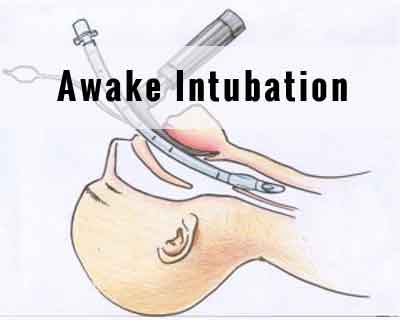- Home
- Editorial
- News
- Practice Guidelines
- Anesthesiology Guidelines
- Cancer Guidelines
- Cardiac Sciences Guidelines
- Critical Care Guidelines
- Dentistry Guidelines
- Dermatology Guidelines
- Diabetes and Endo Guidelines
- Diagnostics Guidelines
- ENT Guidelines
- Featured Practice Guidelines
- Gastroenterology Guidelines
- Geriatrics Guidelines
- Medicine Guidelines
- Nephrology Guidelines
- Neurosciences Guidelines
- Obs and Gynae Guidelines
- Ophthalmology Guidelines
- Orthopaedics Guidelines
- Paediatrics Guidelines
- Psychiatry Guidelines
- Pulmonology Guidelines
- Radiology Guidelines
- Surgery Guidelines
- Urology Guidelines
Awake tracheal intubation: Difficult Airway Society guidelines

The Difficult Airway Society (DAS) has released recommendations on awake tracheal intubation (ATI). These guidelines aim to increase the use of ATI by providing clear guidance for clinicians to support decision making, preparation, and performance of ATI in the setting of a predicted difficult airway.
Awake tracheal intubation has a high success rate and a low‐risk profile and has been cited as the gold standard in airway management for a predicted difficult airway. However, it is still underused in cases of anticipated difficult airway management.
Awake tracheal intubation has a favorable safety profile because both spontaneous ventilation and intrinsic airway tone are maintained until the trachea is intubated. It can be unsuccessful in 1–2% of cases, but this rarely leads to airway rescue strategies or death.
The recommendations listed below aim to support clinical practice and help lower the threshold for performing awake tracheal intubation when indicated.
- Awake tracheal intubation must be considered in the presence of predictors of difficult airway management.
- A cognitive aid such as a checklist is recommended before and during the performance of awake tracheal intubation.
- Supplemental oxygen should always be administered during awake tracheal intubation.
- Effective topicalization must be established and tested. The maximum dose of lidocaine should not exceed 9 mg.kg−1 lean body weight.
- Cautious use of minimal sedation can be beneficial. This should ideally be administered by an independent practitioner. Sedation should not be used as a substitute for inadequate airway topicalization.
- The number of attempts should be limited to three, with one further attempt by a more experienced operator (3 + 1).
- Anesthesia should only be induced after a two‐point check (visual confirmation and capnography) has confirmed the correct tracheal tube position.
- All departments should support anesthetists to attain competency and maintain skills in awake tracheal intubation.
"These guidelines prioritize patient safety and provide recommendations for best clinical practice. It is hoped that they will lead to a paradigm shift in clinical practice and improve the care of patients with predicted difficult airway management in the UK and beyond," wrote the authors.
The document, "Difficult Airway Society guidelines for awake tracheal intubation (ATI) in adults," is published in the Anaesthesia journal.

Disclaimer: This site is primarily intended for healthcare professionals. Any content/information on this website does not replace the advice of medical and/or health professionals and should not be construed as medical/diagnostic advice/endorsement or prescription. Use of this site is subject to our terms of use, privacy policy, advertisement policy. © 2020 Minerva Medical Treatment Pvt Ltd